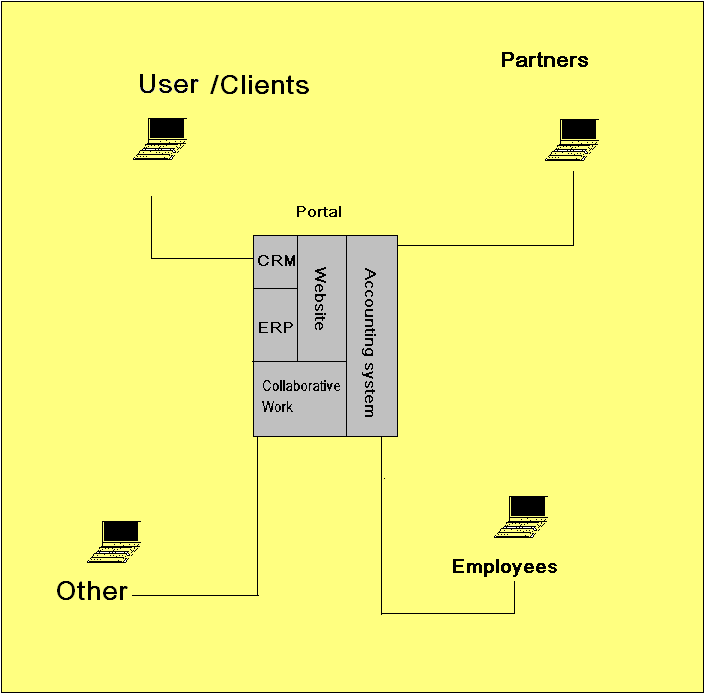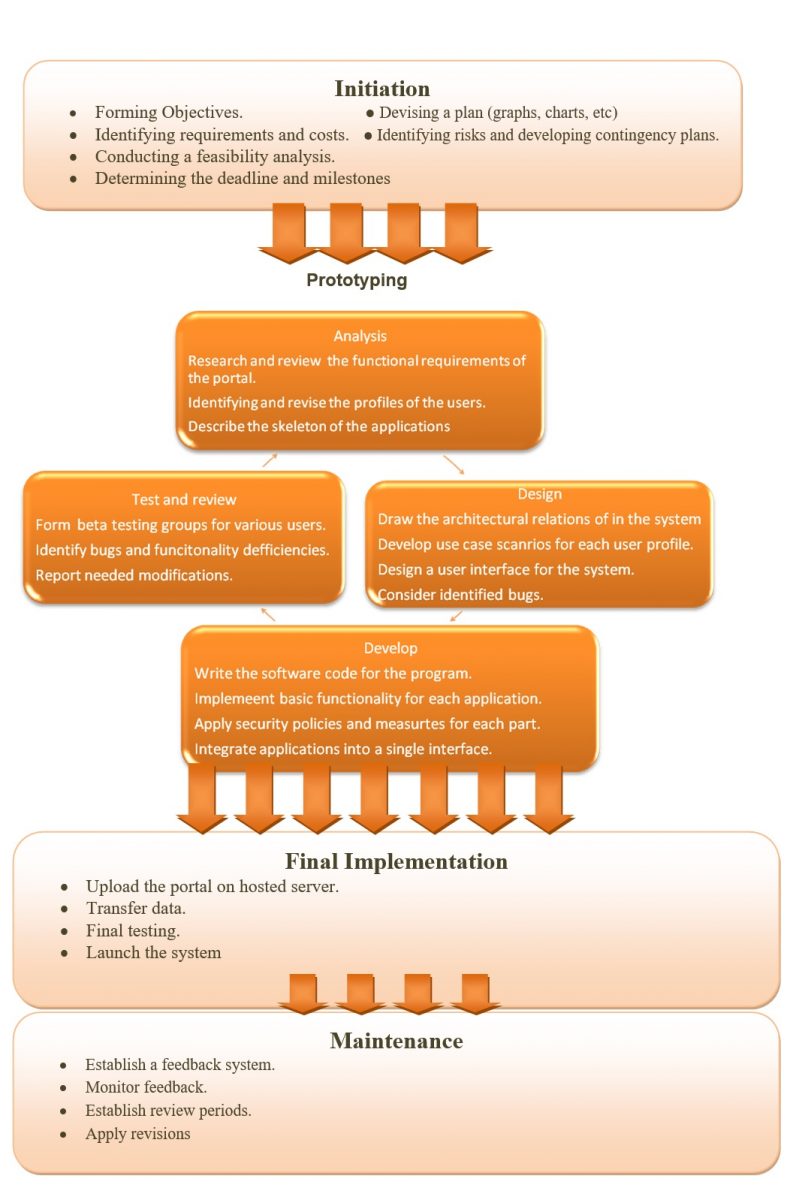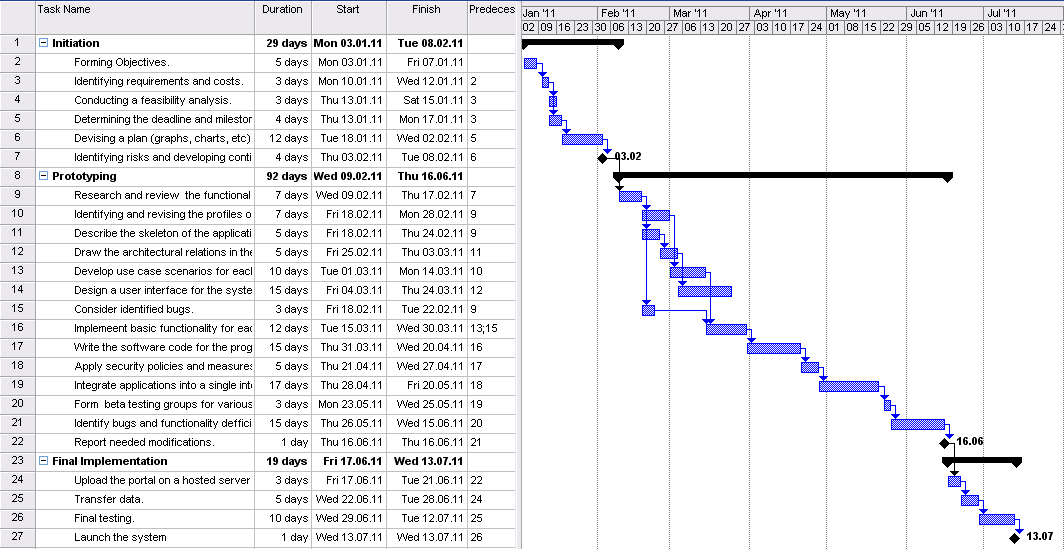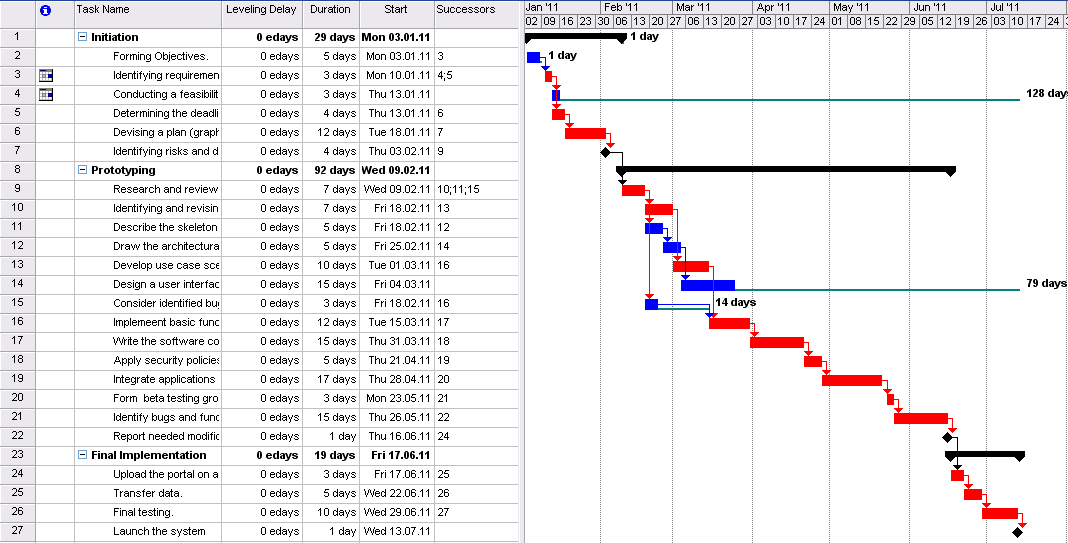Executive Summary
The present report is a summary of the solution proposed to the New Castle Australian Theatre in response to the venue’s identified problems of the lack of customer awareness, low revenues, the absence of a unique selling point, and others. The report proposes the implementation of such an IT solution as a corporate portal. Corporate portals are unified interfaces for users, employees and partners that provide access to various applications. The incorporation of the portal addresses each of the identified problems of the theatre, the most important of which is the lack of awareness. The implementation of the portal through the stages from initiation to implementation is estimated to take 6 months, considering the risks that might occur during the project. The report provides the overall structure of implementation, the main tasks, time schedule, and the project’s risk assessment.
Project Outline
The incorporation of Information Technology (IT) can be seen as an essential part of business in the contemporary world today. From small shops to large corporations the role of IT can vary, including enabling roles, i.e. tools that offer capabilities that were not present in the initial form of the organization or as process restructurers, where IT eliminates excessive layers of management (Dedrick and Kraemer, 2005, Fulk and DeSanctis, 1995). Along with the variations in the role of IT vary the types of organizations in which IT can be implemented. For the New Castle Australian Theatre, a small entertainment venue with 12 full-time actors, the implementation of IT is proposed to solve the problem of low market awareness and the absence of a unique selling point, all of which result in low revenues. In that regard, the present report proposes the implementation of a corporate portal, as an integrated solution that will target the strategic objectives of the theatre on many levels, including
- Internet Presence
- Customer Relations Management
- Electronic collaboration.
- Electronic accounting system.
- Integrated Electronic Resource Planning (ERP) solution.
A corporate portal, also known as an enterprise information portal, is an IT solution that can be defined as “applications that enable companies to unlock internally and externally stored information and provide users a single gateway to personalized information needed to make informed business decisions” (Finkelstein, 2009). The proposed solution for the portal and its functions can be seen in the following figure.

The portal will be simply represented as a unified web interface that will provide different users with different sets of functions (Corporate Portal, n.d.). The users and the functions can be categorized as follows (Collins, 2001):
- Clients –will have access to the website of the theatre, in which they will have the ability to learn about new shows, make reservations, buy tickets, and leave requests and feedback.
- The employees of the theatre – through a system of authorization, such user groups will be able to have access to the accounting system, CRM tasks, and ERP tasks, all unified through a single integrated interface, with different policies to each user from this group. Collaboration of CRM processes can be facilitated through the usage of corporate portals (Edwards, 2007).
- Partners – the partners can be seen through schools and universities, who can make corporate orders on the portal, supply partners, etc.
- Other – different groups and functionalities can be added later to the portal.
The main aim of the implementation of the portal is effective knowledge management, which can achieve various goals for the theatre, through bringing all the stakeholders into one place, i.e. customers, employees and partners. Examples of knowledge management can be seen through tracking comments, information left by customers on the website, and adding to other vital statistics, such as group characteristics, sales numbers, and theatre visitors, and transferring them within the same interface into CRM activities, such as reports, online marketing, newsletters, etc.
The steps involved in the project are specific:
- Determining the characteristics of the portal.
- Designing the portal, and its separate applications.
- Purchase the technical equipment and the software for implementation.
- Rent a low-cost web server that will host the portal.
- Train personnel.
- Launch the portal.
- Track the results.
- Evaluate.
Accordingly, the objectives that the portal aims for are measurable through such indicators as
- Sales
- The number of visitors on the website.
- The costs were reduced.
- The level of satisfaction of customers.
The deadline for the project is established to 6 months, at the end of which the portal will be launched.
Justification
The Justification for launching the company’s corporate portal can be seen on many dimensions. First of all, the results of SWOT (strengths, weaknesses, opportunities, and threats) analysis can be seen as a good indicator of the appropriateness of the proposed solution. The incorporation of the portal can leverage such a company’s strength as the characteristics of the population, i.e. educated, young, with an interest in arts, and who would like to capitalize on the long theatre tradition of New Castle. Such a population will form a large group of internet-educated users who check the shows on the internet before going. The same can be said about tourists, who will like to learn about the play and the reviews before making a reservation. In that regard, the use of social networks and YouTube to promote theatres can be seen as one way of leveraging the strength indicated in SWOT (Horlyk, 2010).
SWOT Analysis
At the same time, such a solution minimizes the weakness outlined through the lack of internet presence. The importance of web presence for organizations can be seen through utilizing the web “as a channel through which an organization can tell the outside environment about what it is doing, why it is doing it, and what it can do to help satisfy the needs of its constituency” (Traunmüller, 2002). The web presence in the regional context and for tourist purposes, the web is an ideal platform for marketing provided services on a global market (Tschanz and Klein, 1996). The lack of such presence means that the company either does not provide information about its activities, making potential customers unaware, or uses other methods which have a lower target audience, higher costs, and lower effectiveness, e.g. street ads and newspaper advertisements. Accordingly, such a solution can be justified by eliminating such weaknesses as a low number of visitors.
The incorporation of corporate portals, in particular, can be a strong factor for the employees of the theatre through knowledge management and IT acceptance by staff. The solution counters such weaknesses as the absence of IT knowledge in the staff and eliminates the threats of funding cuts and knowledge management. Portals are known for their ease of use, which does not require special technical knowledge, and at the same time can cut the costs of training (Osborn, 2000). Accordingly, the use of a portal will create a base of knowledge that will not be dependable on specific employees, with the accounting system being integrated into a knowledge management system (MUNTEAN, 2009, Elangovan, 2009).
In that regard, the justification for the proposed solution can be summarized the following table which will represent the costs and the benefits involved in the project.
Thus, it can be concluded that the implementation of a corporate portal might seem like a feasible solution for the current strategic position of the New Castle Australian Theatre.
Plan and Risks
The plan of the current project is outlined through the stages of developing an e-business solution explained in Chaffey (2009). The overall structure of the stages can be seen in the following graph.

The duration of the project tasks can be seen through a PERT table, in which estimation was made based on pessimistic and optimistic values. It should be noted that the actual; duration of the project is lower than the estimated six-month period. The rationale of the latter can be seen through making a buffer period for managing any unexpected risks, as it will be shown in the risk section of the report.
A corresponding Gantt chart of the assigned tasks can be seen in the following graph:


The risks in IT projects can be seen as a common aspect, for which those risks should be identified and a proper contingency plan should be developed. There are many external factors that might influence the occurrence of risks (Murch, 2001). Such factors might be seen through the prices of hardware, economic conditions, etc. Risk assessment of the present project is concerned with technological, organizational, and managerial aspects, which can be seen in the following table.
References
CHAFFEY, D. 2009. E-business and e-commerce management: strategy, implementation, and practice, New York, FT Prentice Hall.
COLLINS, H. 2001. Corporate portals: revolutionizing information access to increase productivity and drive the bottom line, New York, AMACOM.
CORPORATE PORTAL. n.d. Corporate portals: technology and business. Web.
DEDRICK, J. & KRAEMER, K. L. 2005. The Impacts of IT on Firm and Industry Structure: THE PERSONAL COMPUTER INDUSTRY. California Management Review, 47, 122-142.
EDWARDS, J. 2007. Get It Together with Collaborative CRM. Web.
ELANGOVAN, N. 2009. INTENTION TO SHARE KNOWLEDGE IN CORPORATE PORTAL. Web.
FINKELSTEIN, C. 2009. CORPORATE PORTALS FOR BUSINESS. Web.
FREDERICKSON, V. 2008. Risk Management and the HR Executive. Web.
FULK, J. & DESANCTIS, G. 1995. Electronic Communication and Changing Organizational Forms. Organization Science, 6, 337-349.
HORLYK, E. 2010. Community theater use YouTube to promote play. Sioux City Journal. Web.
LEE, E. 2010. Storing Your Data in the Cloud. Intuit, Inc. Web.
MUNTEAN, M. I. 2009. Knowledge Management Approaches in Portal-Based Collaborative Enterprises.Informatica Economica. Web.
MURCH, R. 2001. Project management: best practices for IT professionals, Upper Saddle River, NJ, Prentice Hall.
OSBORN, M. 2000. Interview with Portal Wave’s vice president of corporate marketing, Chuck Kao. Tech Republic. Web.
TRAUNMÜLLER, R. 2002. Information systems: the e-business challenge, Boston, Kluwer Academic Publishers.
TSCHANZ, N. & KLEIN, S. 1996. Internet Strategy Development in Tourism – Concept and Case Study. SISnet Research Workshop ‘Internet and Business’. Web.